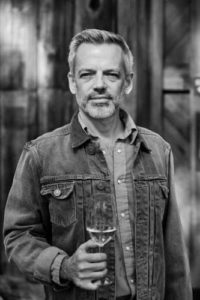Get ready for your vineyard crash-course in wine vineyards leading up to and during harvest.
By CHW Team
A graduate of UC Davis with a degree in biochemistry, Neeley first worked in cancer research for a biotech firm in South San Francisco. Every vacation, he would end up in wine country. And he started to realize that winemaking was like food science and being a chef—two things he loves. Neeley decided to pursue a path in wine, and went back to Davis to earn a Master’s degree in Viticulture and Enology. He completed his degree in 2003, and worked his first harvest internship that year at Trefethen Vineyards.
Neeley landed his first full-time wine job working in the lab for Randall Grahm at Bonny Doon, then took an enologist position at Schug in Sonoma. Then, in 2008, he got a call from Trefethen to join up as their assistant winemaker, and as luck would have it, the winemaker changed jobs and Neeley was promoted within a couple of months to winemaker. He stayed at Trefethen until 2015, then worked two vintages for Dave Phinney at Orin Swift Cellars, and in 2016, after Orin Swift sold to Gallo, he joined Kenwood Vineyards. Neeley served as Kenwood’s winemaker until 2022 when he joined Kunde.

Zeke Neeley
Winemaker
Senior winemaker at Kunde Family, one of the shining gems in the Vintage Wine Estates portfolio, is also one of the winemakers at the helm of Cameron Hughes’ winemaking team. Joining Neeley in the cellar (and on the hunt for exceptional wines from California to Tuscany) are Mike Lawrence and Marco DiGuilio.
We recently spoke with Neeley about what’s going on in the vineyards right now, during the second quarter of the year. Neeley is either always in a vineyard, in a winery, or traveling to a vineyard or winery, so it was luck that we caught him.
Q: Zeke, tell us about what is happening in the vineyards during the months of April to July, from bud break to flowering and fruit set.
Zeke Neeley (ZN): there is a lot of action in the vineyards—from the vines and the crews. We have bud-break, where the vines come out of dormancy, shoot growth, flowering, fruit set, and veraison (pronounced ver-AY-jun). Flowering is important because flowers become berries, and if there is a lot of atmospheric moisture, we may end up with mold spores inside the clusters—which nobody wants. Also, the amount of sunlight on each flower will help to determine whether or not that flower “sets” and becomes a berry. Also, the amount of sunlight on the flowers helps determine how fruitful the vine will be next year—pretty complicated. The berries then grow to their eventual size, and we have “veraison,” which is when the berries start to turn color.
Q: During fruit-set, how do you get a sense of the yields, or amount of grapes that will grow on your vines during the primary growing season? How will that information inform your farming?
ZN: This is an inexact science because if you have a “poor set” which means fewer flowers become berries, sometimes the vine still has a lot of energy and makes the berries huge. This makes estimating the eventual harvest tonnage problematic. Every year is different.
Q: Looking ahead to the next phase of growing, veraison, when the grape clusters begin to ripen, will a cooler year like 2023 push the timetable and make the season longer? How does that impact things?
ZN: We tend to have dry autumns so there shouldn’t be a real issue with a longer growing season. My only concern, these days, is when the grasses dry out and we have the threat of wildfire.
Q: Let’s end on another myth-buster. You can only tell when grapes are ripe by testing the sugar levels as a measure of Brix. Is that true or false? And here’s one to tackle: hand-harvested grapes are always better than mechanical-harvested grapes. Have at us!
ZN: We always test the sugar levels, but mostly it’s to inform whether the winemaker should evaluate the fruit soon. You need to taste the grapes to see what the flavors are and, see if that’s the wine you want to make. I was at a wine dinner and someone asked me why I choose to make a Chardonnay that’s 14.5% alcohol, and I said “I don’t.” The next vintage of that same wine was 13.5% alcohol. I pick the grapes when they are ready, and whatever sugar level that might be results in the alcohol you see on the label.
As for hand vs. machine-harvesting, in the 1990’s, machine harvesters used to be glorified weed whackers. They would beat up the fruit and beat-up the vines—picking bins would have pieces of wood from the grape vines. The machine harvesters they have now are amazing and some even have optical “eyes” which sort out material other than grapes before it makes it to the picking bin. The biggest difference in quality of the pick is how hot or cold the fruit is when it reaches the crushpad. If workers are not available and the only way to get cold, early morning fruit to the winery is by machine—then let’s do it!

